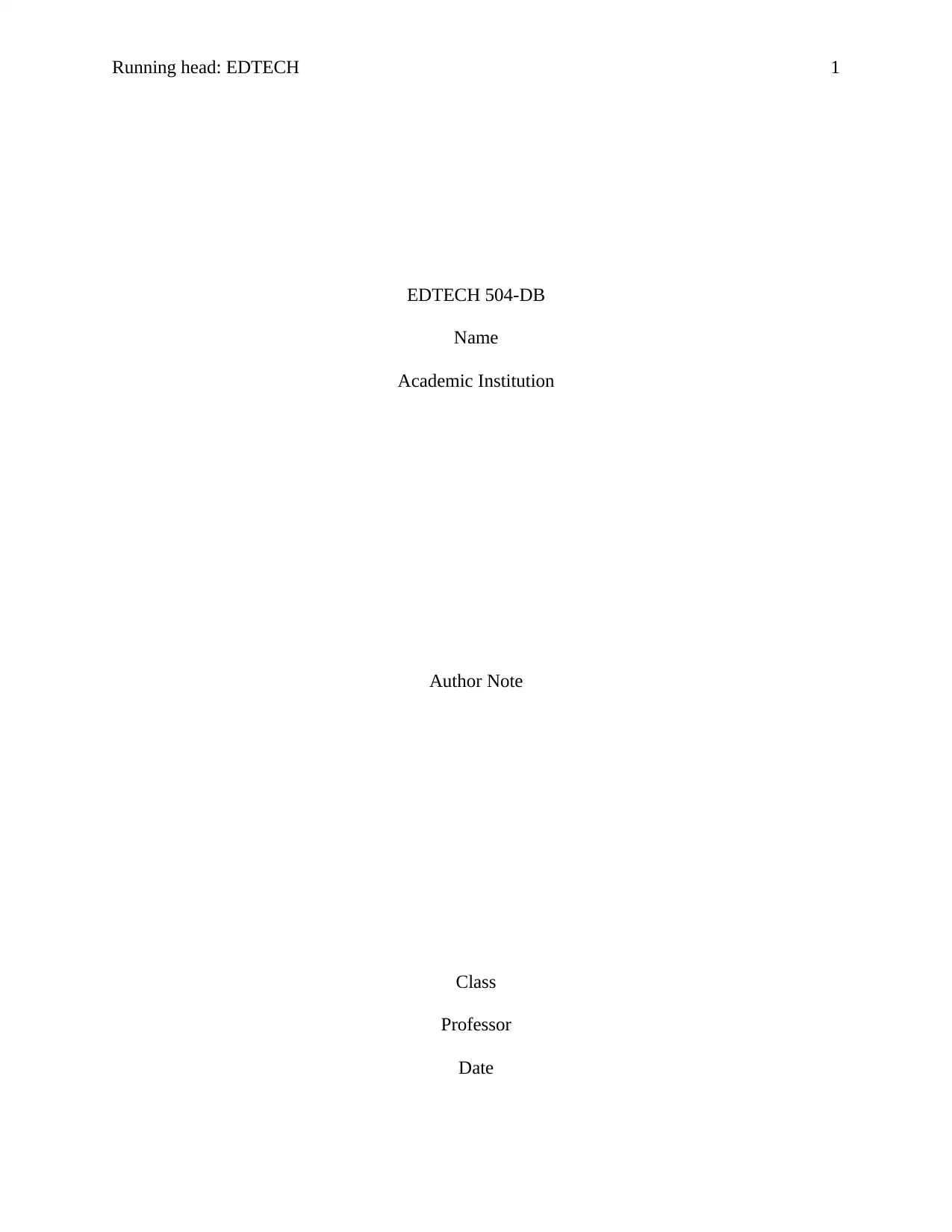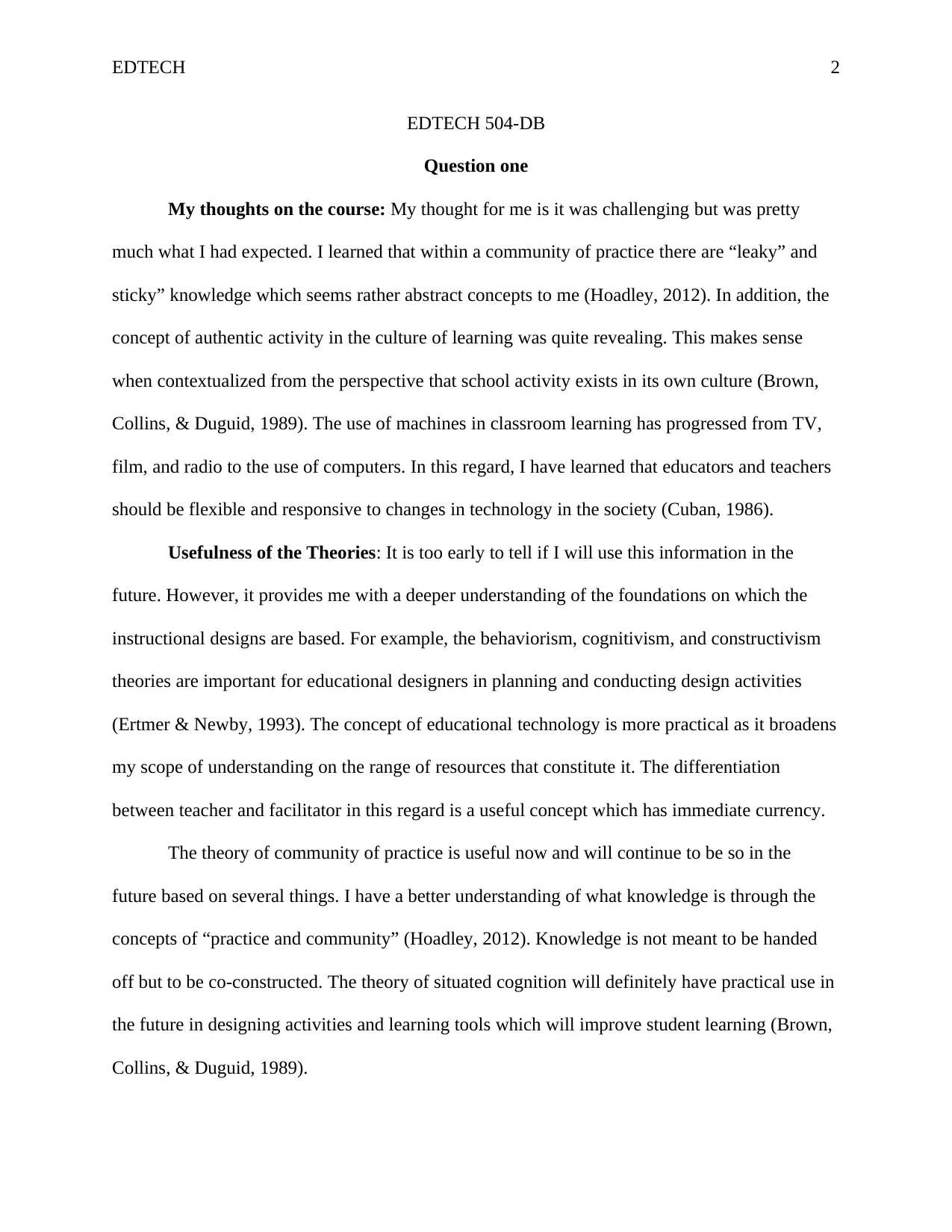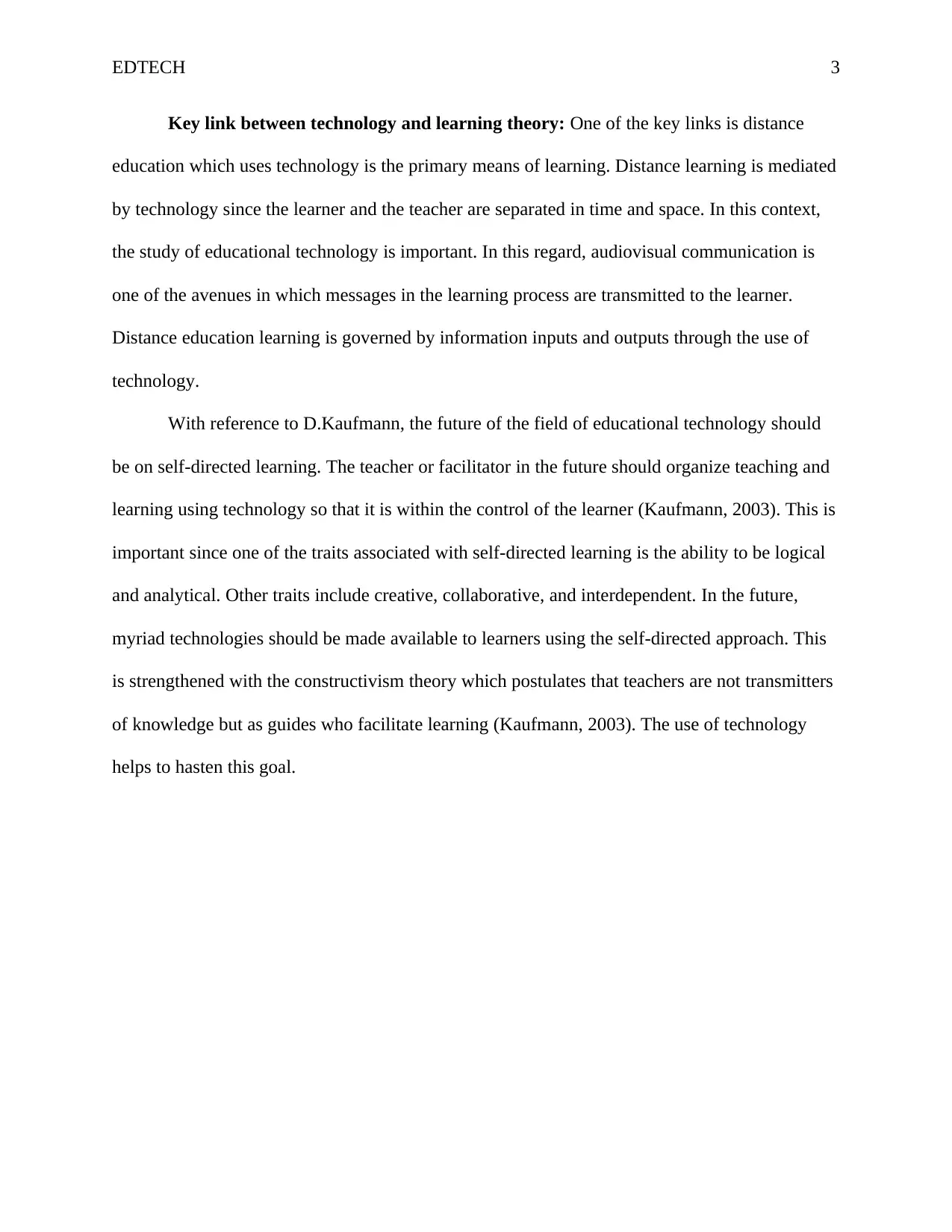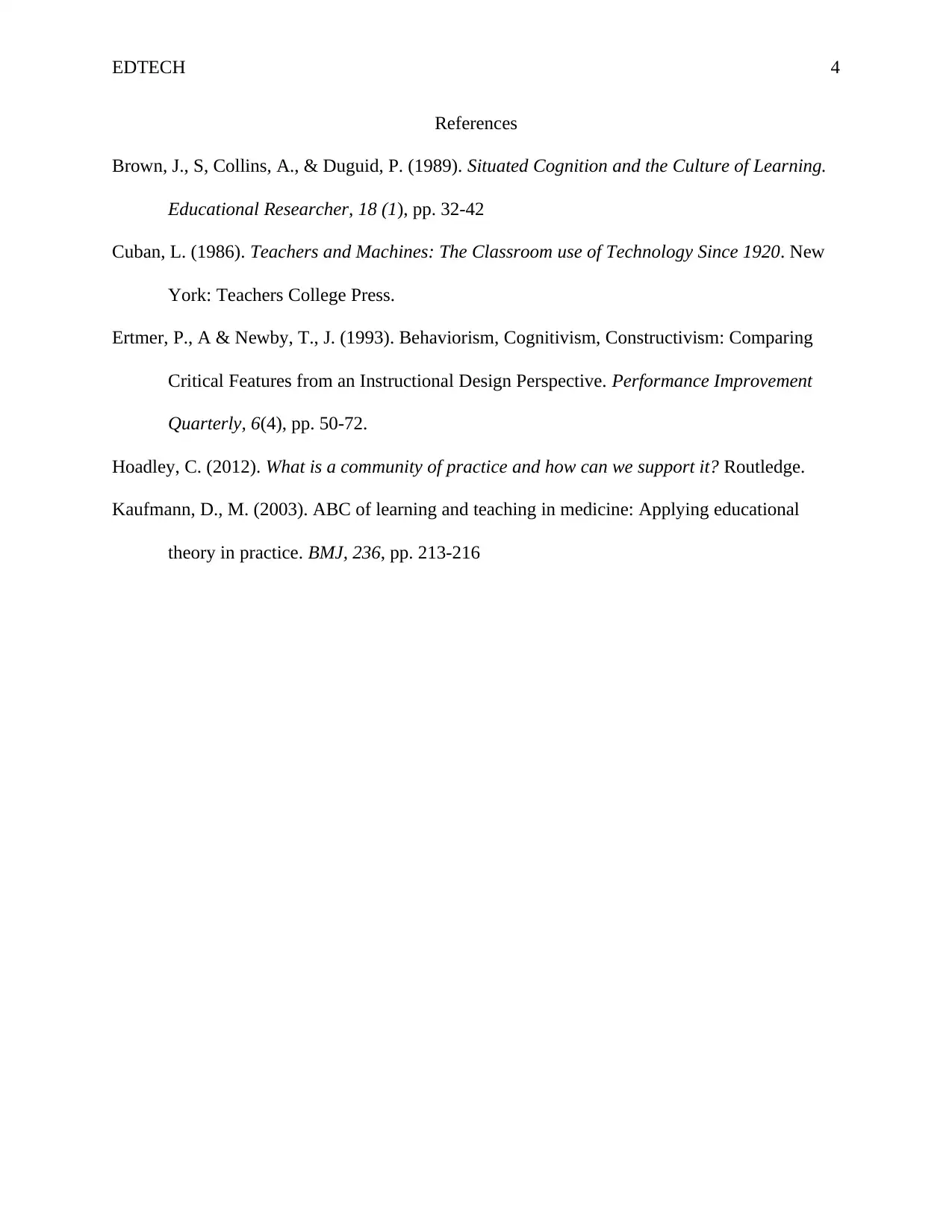EDTECH 504: Critical Analysis of Technology and Learning Theories
VerifiedAdded on 2023/06/13
|4
|773
|259
Discussion Board Post
AI Summary
This discussion board post reflects on an EDTECH 504 course, exploring concepts like 'leaky' and 'sticky' knowledge within a community of practice, and the significance of authentic activities in learning. The author discusses the evolution of technology in education, from traditional media to computers, emphasizing the need for educators to adapt to technological changes. Key learning theories such as behaviorism, cognitivism, and constructivism are highlighted as foundational for instructional design. The post also delves into the role of technology in distance education and the importance of self-directed learning, facilitated by technology and guided by constructivist principles, where teachers act as facilitators rather than transmitters of knowledge. The author references several works, including Brown, Collins, & Duguid (1989) on situated cognition, Cuban (1986) on technology in classrooms, Ertmer & Newby (1993) on learning theories, Hoadley (2012) on communities of practice, and Kaufmann (2003) on applying educational theory in practice.
1 out of 4










![[object Object]](/_next/static/media/star-bottom.7253800d.svg)